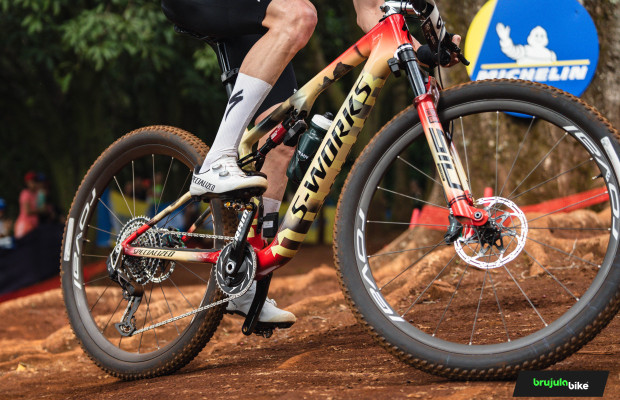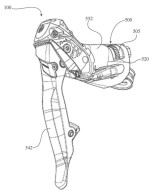This SRAM patent previews new Red AXS levers
Again, the publication of patents allows us to guess where brands are working. The latest to attract attention has been the one that proposes a new design for SRAM road levers for their AXS groups and which augur a more than likely renewal of their Red group, which remains unchanged since its launch at the beginning of 2019.

SRAM proposes a redesign of its road levers to improve ergonomics and braking
For some time now, one of the recurring topics among road cycling enthusiasts is when SRAM will renew its Red AXS group. Remember that its top of the range for road and gravel is a group that was launched in 2019 in what was the second generation of its wireless changes.
A AXS technology that has been spreading through the SRAM range to cover all its groups, from the modest Apex to the aforementioned Red. Precisely, in these lower groups is where SRAM has been incorporating small modifications that have mainly affected the design of the levers, reaching these up to the Force AXS, which recently received a facelift.
RECOMENDADO

The cyclist's patience: how long, gentle training sessions build your best season

Tips for cycling in the rain

25 cycling gifts ideas to get it right

When do helmets have to be changed? Do they have an expiration date?

Some reasons to stay away from the road in winter

S-Works: what does it really mean and where does Specialized's most exclusive label come from?

However, nothing is known about the Red AXS, unchanged since its launch something that, on the other hand, does not seem to be too much of a problem for the brand given its presence in many of the top-of-the-range assemblies of a large number of brands and which, even today, continues to show enviable performance in all respects.
But, everything is susceptible to improvement and the laws of the market impose an evolution that now seems to be closer with the appearance of patents that propose a completely new lever design.
In terms of ergonomics, this design seems to solve one of the main criticisms towards SRAM road levers such as the excessive size of them. The head is reduced and the grip area seems to be wider to better accommodate the hand. For its part, the brake lever has a greater angle towards the outside, perhaps, to better fit handlebars with a lot of flare and the habit of turning the levers inward to gain aerodynamics.

Externally, the inclusion of an auxiliary button in the upper internal area also stands out, which, like the rest, can be programmed to the user's liking to perform the function that interests us the most.
It is inside the lever where we find the most relevant modifications that affect its brakes, seeking greater efficiency of them. Starting, by the position of the pivot of rotation of the brake lever, which is placed higher to thus gain greater leverage and, therefore, exert more force on the piston with less effort on the part of the cyclist.
Apart, to add more efficiency, the piston changes its location in the head of the lever, responsible for the large size that this area has in the current levers, and moves to be positioned horizontally in the body of the lever. A placement that also allows direct actuation from the lever without the need to use rods that transfer the movement to it.

Although the designs shown in the patent do not show it, in the accompanying text it is mentioned that the space freed in the head could be used to add a brake fluid expansion tank which always adds efficiency to the system by making it less susceptible to the presence of air bubbles and providing a greater margin to compensate for heating after prolonged braking.
This also means modifying the contact point adjustment system which is currently adjusted using a 5 mm allen key located at the top of the lever head. Instead, a dial is placed behind the piston, next to the clamp that anchors the lever to the handlebar, very similar to the one SRAM uses in its mountain bike models.
As we always like to warn you, patents do not have to translate into real designs but rather reflect ideas and technical solutions that are collected in these documents to prevent their rivals from using them in their own products without having to pay the royalties associated with them. In any case, what does seem clear is that the renewal of the SRAM Red AXS should not be long if we consider that almost 5 years since its launch exceeds the life cycle of almost any cycling product.